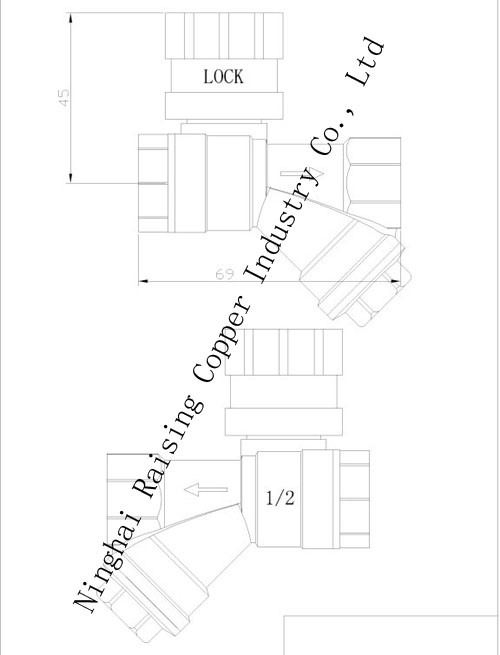Forged Magnetic Lockable Ball Valve with Strainer
Material: Forged brass
Size: 1/2
Customized designs and specifications are accepted
Appicable media: Water, no-causticity liquid
Specifications:
1. Size: 1/2
2. Material: Brass, stainless steel mesh
3. Nominal pressure: 2.0MPa
4. Working medium: Water, seawater, non-corrosive liquid, saturated steam
5. Working temperature: -20 to 180 degrees Celsius
6. Packing: Export Standard
7. Deliver Time: Within 30days after received payment in advance
8. Payment Terms: T/T, L/C

Brake Pads convert the kinetic energy of the vehicle to thermal energy through friction. Two brake pads are contained in the brake caliper, with their friction surfaces facing the rotor. When the brakes are hydraulically applied, the caliper clamps or squeezes the two pads together onto the spinning rotor to slow and stop the vehicle. When a brake pad heats up due to contact with the rotor, it transfers small amounts of its friction material onto the disc, leaving a dull grey coating on it. The brake pad and disc (both now having the friction material), then "stick" to each other, providing the friction that stops the vehicle.
In disc brakes, there are usually two brake pads per disc rotor. These are held in place and actuated by a caliper affixed to the wheel hub or suspension upright. Racing calipers, however, can utilize up to six pads, with varying frictional properties in a staggered pattern for optimum performance. Depending on the properties of the material, the weight of the vehicle and the speeds it is driven at, disc wear rates may vary. The brake pads must usually be replaced regularly (depending on pad material) to prevent brake fade. Most brake pads are equipped with a method of alerting the driver when this needs to be done. A common technique is manufacturing a small central groove whose eventual disappearance by wear indicates the end of a pad's service life. Other methods include placing a thin strip of soft metal in a groove, such that when exposed (due to wear) the brakes squeal audibly. A soft metal wear tab can also be embedded in the pad material that closes an electric circuit when the brake pad wears thin, lighting a dashboard warning light.
Brake Pads
Brake Pads,Rear Brake Pads,Front Brake Pads,Changing Brake Pads
LIXIN INDUSTRIAL & TRADE CO.,Limited , https://www.kgvsparkplug.com